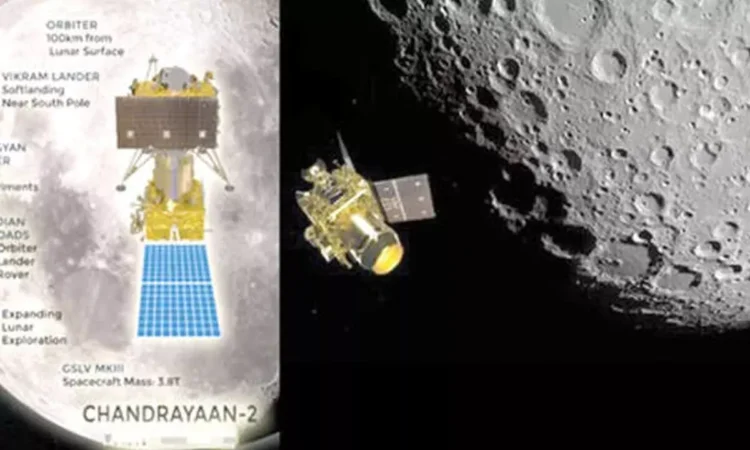Bengaluru: On Saturday, ISRO announced that it has gathered advanced data from the Chandrayaan-2 lunar orbiter to improve understanding of the Moon’s polar regions, focusing on the physical and dielectric properties of its surface. This initiative represents a significant contribution by India to future global lunar exploration. The Chandrayaan-2 Orbiter has been in lunar orbit since 2019, delivering high-quality data. One of its instruments, the Dual Frequency Synthetic Aperture Radar (DFSAR), is notable for being the first to map the Moon using the L-band in full-polarimetric mode at the highest resolution of 25m per pixel. This advanced radar system transmits and receives signals in both vertical and horizontal orientations, making it particularly effective for analyzing surface properties.
Since its launch, approximately 1,400 radar datasets have been collected and processed, resulting in polarimetric mosaics of the Moon’s north and south polar regions (80 to 90 degrees latitude). Scientists at the Space Applications Centre (SAC) in Ahmedabad have utilized these datasets to create advanced data products that indicate the potential presence of water-ice, assess surface roughness, and analyze the dielectric constant, which provides insights into the Moon’s density and porosity. ISRO has developed the algorithm for analyzing the full-polarimetric data and generated the resulting data products locally.


